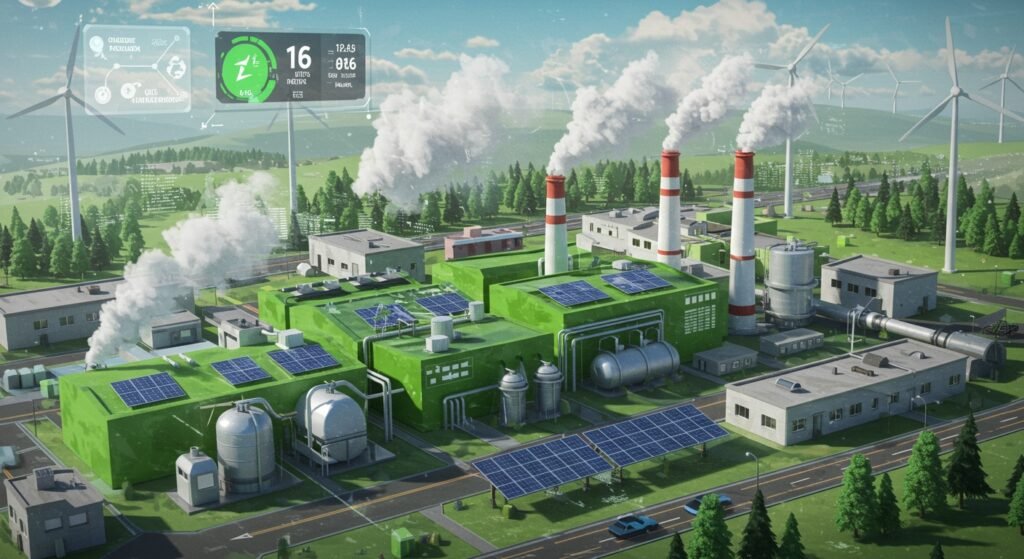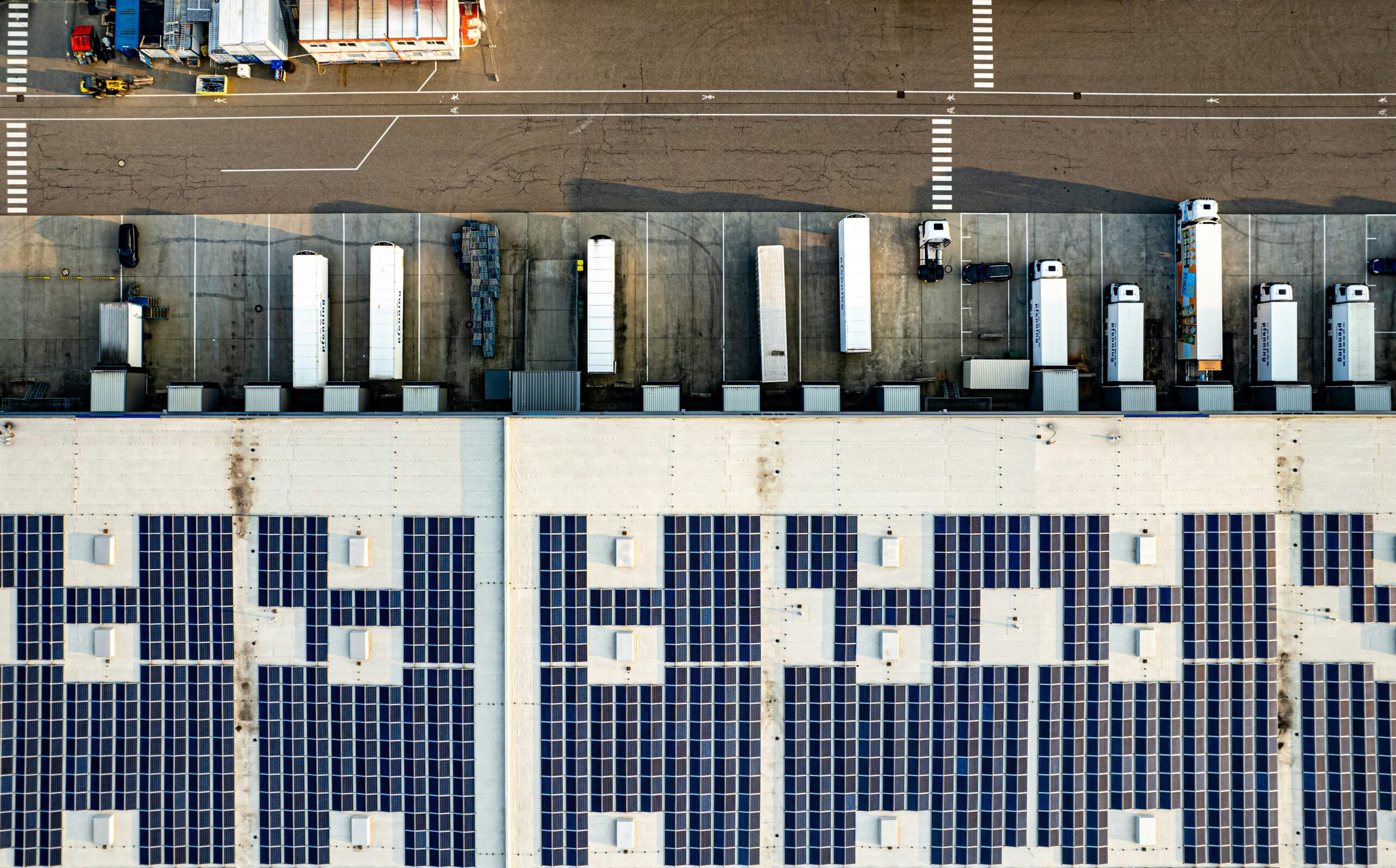Energy Efficiency Strategies for Industrial Plants: Reducing Costs & Emissions
In today’s competitive industrial landscape, optimizing operations goes beyond production targets; it critically involves sustainable practices. Implementing robust energy efficiency strategies for industrial plants is no longer an option but a necessity. By systematically identifying and addressing energy waste, companies can significantly reduce operational costs, minimize their carbon footprint, and enhance their brand reputation. This comprehensive guide explores actionable strategies that industrial facilities can adopt to achieve substantial energy savings and contribute to a healthier planet.
Table of Contents
- Introduction
- The Importance of Energy Audits
- Process Optimization: A Key to Energy Efficiency
- Embracing Advanced Technology for Energy Savings
- Effective Maintenance and Monitoring
- Integrating Renewable Energy Sources
- Beyond Savings: Environmental & Reputational Benefits
- Conclusion
Introduction
The industrial sector is a major consumer of energy, accounting for a significant portion of global energy demand and greenhouse gas emissions. As energy prices fluctuate and environmental regulations tighten, the pressure on industrial plants to improve their energy performance intensifies. Investing in energy efficiency solutions not only provides a competitive edge through cost reduction but also aligns businesses with global sustainability goals, fostering innovation and responsible manufacturing.
The Importance of Energy Audits
The first crucial step in any energy-saving initiative is a comprehensive energy audit. This systematic review identifies how and where energy is consumed within a facility, pinpointing areas of waste and potential for improvement. An effective audit provides a baseline for energy usage and helps prioritize investments in efficiency measures.
Conducting a Comprehensive Audit
An audit typically involves data collection on energy bills, facility walkthroughs, equipment performance analysis, and detailed measurements of energy consumption by various systems (e.g., HVAC, lighting, motors, compressed air). External experts often provide invaluable insights, leveraging specialized tools and knowledge to uncover less obvious inefficiencies. The findings from an energy audit form the backbone of a tailored energy management plan.
Process Optimization: A Key to Energy Efficiency
Many industrial processes operate with inefficiencies that can be resolved through optimization. This involves reviewing production lines, identifying bottlenecks, and implementing changes that reduce energy intensity without compromising output quality or quantity. Simple changes like adjusting operating schedules, modifying temperature setpoints, or improving insulation can yield significant savings.
Optimizing Pumping and Fan Systems
Pumps, fans, and compressed air systems are often the largest energy consumers in industrial plants. Optimizing these systems through variable frequency drives (VFDs), proper sizing, and leak detection and repair can drastically cut electricity usage. For more insights on improving industrial processes, consider exploring the benefits of industrial automation on overall plant efficiency.
Embracing Advanced Technology for Energy Savings
Modern technology offers a plethora of tools to enhance energy efficiency. From smart sensors to advanced control systems, these innovations provide real-time data and automated adjustments, leading to more precise energy management and less waste.
Smart Controls and IoT Integration
Integrating Internet of Things (IoT) devices and smart control systems allows for continuous monitoring of energy consumption across various plant components. This data enables predictive maintenance, optimized scheduling, and automated responses to changing operational demands, ensuring equipment runs only when needed and at optimal loads.
Waste Heat Recovery Systems
Industrial processes often generate significant amounts of waste heat. Capturing and reusing this heat for other applications, such as preheating incoming materials, generating electricity, or space heating, can dramatically improve overall energy efficiency. Technologies like heat exchangers, organic Rankine cycle (ORC) systems, and cogeneration units are vital in this endeavor.
Effective Maintenance and Monitoring
Regular and proactive maintenance is fundamental to sustaining energy efficiency gains. Worn-out components, poor lubrication, and miscalibrated sensors can lead to increased energy consumption and premature equipment failure. A robust maintenance schedule ensures that all systems operate at peak efficiency.
Regular Equipment Checks
Implementing a preventive maintenance program that includes regular checks of motors, boilers, insulation, and piping can prevent energy leaks and ensure optimal performance. Continuous monitoring with advanced sensors can alert operators to deviations from efficient operation, allowing for timely interventions.
Integrating Renewable Energy Sources
Beyond efficiency, incorporating renewable energy sources directly into a plant’s energy mix offers long-term benefits in terms of cost stability and emission reduction. While not strictly an “efficiency” measure, it complements efficiency efforts by reducing reliance on fossil fuels.
Solar and Wind Power for Industrial Use
On-site solar photovoltaic (PV) arrays and small-scale wind turbines can supply a portion of an industrial plant’s electricity needs, especially during peak demand. This reduces electricity purchased from the grid, lowers operating costs, and significantly shrinks the carbon footprint. Feasibility studies are essential to determine the optimal renewable energy integration for each facility.
Beyond Savings: Environmental & Reputational Benefits
The advantages of pursuing robust energy efficiency extend far beyond the immediate financial savings. Companies that prioritize sustainable practices often enjoy improved public image, increased customer loyalty, and easier compliance with environmental regulations. Furthermore, reducing energy consumption directly translates to lower greenhouse gas emissions, contributing positively to global climate action efforts. For more statistics and insights on energy consumption trends, you can visit the U.S. Energy Information Administration.
Key Strategies for Energy Efficiency Improvement
| Strategy | Description | Impact |
|---|---|---|
| Energy Audits | Systematic analysis to identify energy waste. | High (Pinpoints major inefficiencies) |
| Process Optimization | Streamlining operations, reducing idle time. | Medium-High (Continuous savings) |
| Smart Technologies | Automation, IoT for real-time control. | High (Precise control, predictive maintenance) |
| Waste Heat Recovery | Capturing and reusing discarded heat. | High (Reduces primary energy demand) |
| Renewable Integration | On-site solar/wind power generation. | High (Long-term cost stability, emission reduction) |
Conclusion
Embracing comprehensive energy efficiency strategies is a win-win for industrial plants. It leads to substantial cost reductions, mitigates environmental impact, and enhances corporate responsibility. By combining thorough energy audits, process optimization, advanced technology adoption, diligent maintenance, and renewable energy integration, industrial facilities can build a more sustainable, profitable, and future-ready operation. The journey towards greater efficiency is continuous, yielding long-term benefits for businesses and the planet alike.


